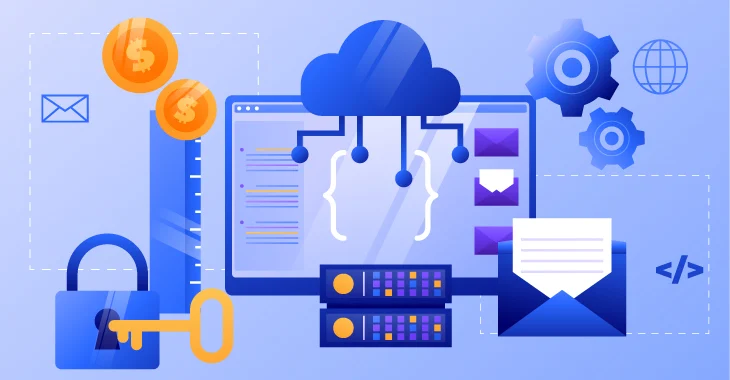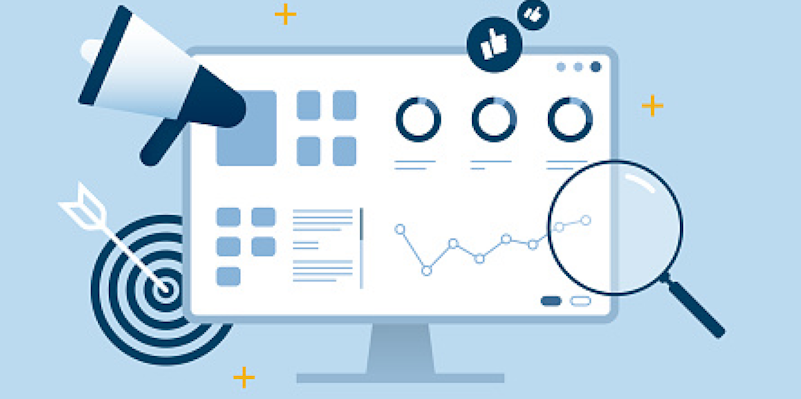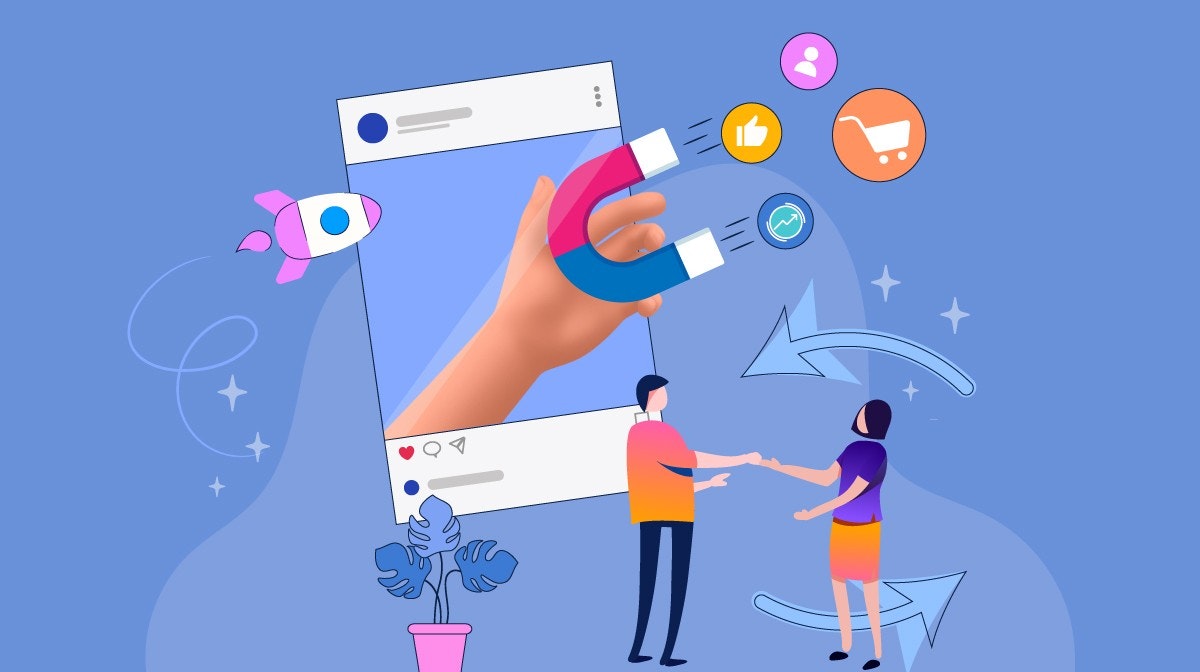What is B2B SaaS marketing?
B2B SaaS marketing involves strategies and tactics used by software-as-a-service companies to attract and retain business customers. Your aim is to generate brand awareness, acquire users, and convert them into paying clients for your products and services.
To succeed in B2B SaaS marketing, you must know your target audience thoroughly. This means knowing:
Their specific needs
The challenges they face daily
How your product solves their problems better than alternatives
While revenue is the ultimate measure of success, many B2B SaaS marketing teams focus on key performance indicators (KPIs) that contribute to overall growth. These include:
Website Traffic
New free user sign-ups (for freemium models)
Conversion rates
Customer acquisition numbers
Customer lifetime value (LTV)
Customer acquisition cost (CAC)
User retention metrics
As you develop your B2B SaaS marketing strategy, remember that your approach will depend on your company's unique position in the market. Different types of SaaS businesses require tailored marketing plans to achieve their goals.
In the following sections, we'll explore effective marketing ideas to boost your brand visibility and attract more paying customers. However, let's first examine the crucial factors you should keep in mind before creating your B2B SaaS marketing strategy.
If you want to track your SaaS business's growth and success, make sure to know these key SaaS metrics to gain valuable insights and optimize your strategy.
Key Considerations for Your B2B SaaS Marketing Strategy

First and foremost, you should understand the fundamentals of your B2B SaaS business. Experts highlights four critical areas to focus on:
Your business model
Your target audience
Your marketing channels
Your product
These elements are interconnected and will shape your marketing approach. Let's explore the first three in more detail.
Understanding Your Business Model
A B2B SaaS business model significantly impacts your marketing strategy. Consider which category you fall into:
Freemium SaaS: Users can access basic features for free, with premium paid options
Enterprise "book a demo" SaaS: Focus on high-value clients with longer sales cycles
Limited free trial Solutions: Offer a time-bound trial of your full product
Each model requires a different marketing approach due to varying buyer types and sales processes.
Freemium Model Example
Companies such as Notion and Webflow use a freemium model. Their marketing often focuses on:
Scaling rapidly
Investing in advertising, SEO, and social media
Creating content to attract a wide audience
Building marketing teams that function like media teams
Enterprise Model Example
Enterprise SaaS companies with "book a demo" models often:
Have higher customer lifetime values (LTVs)
Prioritize sales-driven approaches
Collaborate closely between marketing and sales teams
Pay attention to outbound marketing or a mix of outbound and inbound
Build strategic partnerships within their industry
Funding Considerations
Your financial situation also impacts your marketing strategy:
Bootstrapped Companies:
Focus on profitability over rapid growth
Value money over time (slower growth)
Invest in cost-effective strategies like SEO, outbound marketing, and strategic partnerships
Venture-Backed Companies:
Prioritize rapid growth over immediate profitability
Value time over money (faster growth)
Invest heavily in various marketing channels (paid ads, content marketing, influencer partnerships)
Remember, there's no one-size-fits-all approach to B2B SaaS marketing. Your strategy should align with your business model, target audience, and available resources. In the following sections, we'll explore specific tactics you can adapt to your unique situation.
If you want to ensure your SaaS product meets market needs before launching, learn how to validate your SaaS idea and save time and resources.
B2B SaaS Marketing Pitfalls to Avoid

To help you avoid common pitfalls and focus on growth-driving practices, here are four key "don'ts" in B2B SaaS marketing:
1. Focusing on Claims Instead of Gains
When presenting your SaaS offering, don't just talk about your product features. Instead, translate these features into clear benefits for your users. Show your prospects what they'll gain by choosing your solution.
Example:
Avoid making clams: We offer advanced collaborative and communication tools.
Highlight gains: Enable your employees to collaborate and communicate better. (gain)
The second statement emphasizes the value and benefits, not just the features you offer.
2. Spraying and Praying
Don't waste resources targeting a broad, unfocused market. Instead:
Identify your TAM or Total Addressable Market, SAM or Serviceable Addressable Market, and SOM or Serviceable Obtainable Market.
Create a strong ICP (Ideal Customer Profile)
Build detailed personas based on your ICP
This focused approach helps you target the right leads who are more likely to convert.
3. Neglecting Content Marketing
Many marketers don’t understand the power of solid content. Today's B2B buyers seek rich, informative content experiences. To succeed:
Make sure to provide helpful content regularly
Educate and inform your audience
Address your prospects' pain points at every step of your funnel
4. Neglecting genuine relationships
While automation tools have their place in managing marketing processes, remember that you can't automate genuine relationships. So, when it comes to B2B SaaS marketing, it isn't just about targeting businesses – it's about connecting with the humans behind those businesses.
Refer to your personas regularly
Target the decision-makers within companies
Take a thoughtful, human-centric approach to your marketing efforts
By avoiding these common mistakes, you'll be better positioned to create effective B2B SaaS marketing strategies that drive growth and build meaningful connections with your target audience.
8 Best Practices for B2B SaaS Marketing

To drive growth, focus on these key strategies:
1. Define Your ICP (Ideal Customer Profile)
Understanding your target audience is crucial. Develop a clear ICP and detailed personas to:
Create targeted messaging
Drive effective demand generation
Focus on campaigns likely to attract customers
Even if you're pre-product-market fit, start with your best estimate of your ICP and adjust based on campaign results.
2. Craft Compelling Messaging and Positioning
Once you know your audience, focus on your messaging and how to deliver it effectively:
Develop a unique brand voice
Create strong value propositions
Address your customers' pains, dreams and fears
Present features in form of benefits
Use "you" language to relate to your prospects
3. Implement the How/Why Ladder Framework
This tool helps tailor your messaging to different personas:
Organize positioning from vague benefits to specific features
Address day-to-day users with detailed functionality
Focus on high-level benefits for executive personas
Explore different levels of value expression by moving "up" and "down" the ladder.
4. Understand Your Marketing Channels
Audit your current channels to develop an effective marketing strategy:
Identify where your customers are
Evaluate existing lead-generating channels
Assess paid channel performance
Explore new channel opportunities
Balance short-term and long-term growth strategies
Decide between inbound, outbound, or a mixed approach
Determine if you need a product-led or sales-led approach
5. Adopt a Growth-Driven Mindset
Focus on your company goals and broader strategy:
Establish a strong go-to-market (GTM) strategy
Aim for T2D3 growth
Prioritize quality and quantity of Marketing Qualified Leads (MQLs)
6. Define your OKRs or Objectives and Key Results
Set clear goals to drive growth:
Create SMART (Specific, Measurable, Achievable, Relevant, Time-Bound) objectives
Provide v and transparency across teams
Use OKRs to measure success and prioritize efforts
7. Align Your Sales and Marketing Funnel
Ensure marketing efforts translate into sales:
Define common terms for funnel stages
Set shared goals between marketing and sales teams
Structure your team to support these goals
Identify and address gaps in your funnel strategy
Match personas to each stage of the buyer's journey
8. Track Progress Weekly
Measure and track your marketing efforts consistently:
Use a SaaS marketing dashboard to monitor key metrics
Focus on MQLs per source,website sessions, lifecycle stages, keyword rankings, revenue, and customer acquisition costs
Analyze data to refine your campaigns and marketing strategy
By implementing these best practices, you'll create a more effective B2B SaaS marketing strategy that drives growth, attracts quality leads, and improves your return on investment.
To stay competitive in the ever-evolving SaaS landscape, discover the latest SaaS trends and align your strategies with current market demands.
Wrapping Up
Learning B2B SaaS marketing is an ongoing process that requires a deep understanding of your audience, a clear strategy, and constant refinement. By avoiding common pitfalls and utilizing best practices, you can create a powerful marketing engine that drives growth for your business.
Remember, effective B2B SaaS marketing is about more than just promoting your product. It's about creating value for your customers, addressing their pain points, and demonstrating how your solution can transform their business.
As you implement these strategies, keep in mind that user experience (UX) plays a crucial role in your marketing success. A well-designed user interface and seamless customer journey can significantly impact your conversion rates and customer satisfaction.
Ready to take your B2B SaaS marketing to the next level? Our UX AI B2B design agency specializes in creating intuitive, conversion-focused experiences for SaaS platforms. Let's collaborate to optimize your user journey and boost your marketing ROI. Contact us today to discover how we can boost your B2B SaaS marketing through exceptional UX design.
For SaaS startups looking to create an intuitive and engaging product, explore these essential UX design principles to enhance user satisfaction and retention.
By focusing on both strategic marketing practices and user-centric design, you'll be well-positioned to stand out in the competitive B2B SaaS landscape and drive sustainable growth for your business.
FAQ’s
1. What strategies can help grow a B2B SaaS business?
To grow a B2B SaaS company, focus on three key areas: business expansion, customer retention, and brand advocacy. Build a strong partner network and emphasize direct sales. Invest in SEO/SEM strategies and cultivate your public relations. Remember to leverage the inherent advantages of the SaaS model, which delivers applications via web platforms, in your growth strategies.
2. How would you define SaaS product marketing?
SaaS product marketing is the practice of promoting and selling Software as a Service solutions to a specific target audience. It involves using various channels and strategies that are tailored to the unique aspects of cloud-based software services, taking into account the subscription-based model and online delivery method.
3. What is the concept of SaaS performance marketing?
SaaS performance marketing is a results-driven approach that maximizes return on investment by only paying for meaningful outcomes. This method ensures efficient use of marketing budgets and helps in targeting the right audience, particularly those actively seeking your solution. It's particularly effective in the SaaS space due to the measurable nature of online interactions.
4. Can you explain what a SaaS competitive strategy entails?
A SaaS competitive strategy, often called SaaS Competitive Analysis, is a methodical process used by SaaS companies to evaluate their market rivals. This analysis involves identifying competitors, understanding their strategies, pinpointing their weaknesses, and assessing their market positions. The goal is to gain a competitive edge in the rapidly evolving SaaS marketplace.
5. How is ROI calculated in the SaaS context?
To calculate ROI in SaaS marketing, also known as MROI or ROMI (return on marketing investment), use this formula: subtract your marketing cost from sales revenue, then divide by marketing cost. This calculation can be applied to evaluate both specific marketing initiatives and overall marketing ROI in a SaaS context, helping to guide future marketing decisions and budget allocations.





